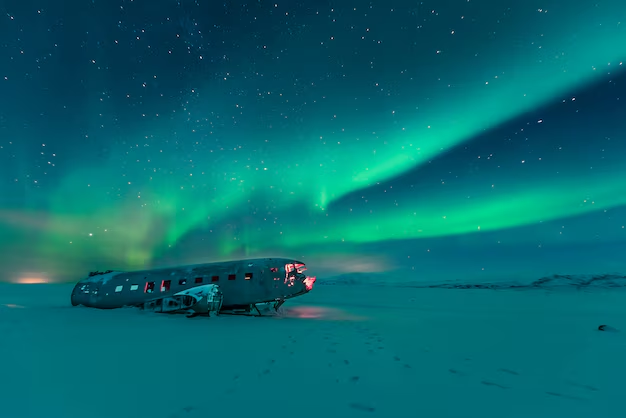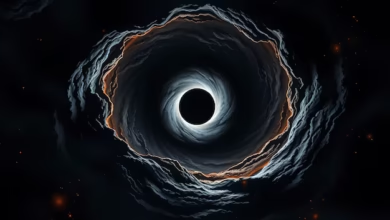Aurora Forecast in Iceland: A Guide to Chasing the Northern Lights

The aurora borealis, or northern lights, is one of nature’s most spectacular displays, captivating observers with its ethereal dance of colors across the night sky. For many, witnessing the aurora is a bucket-list experience, and Iceland is among the best places in the world to do so. With its pristine landscapes, minimal light pollution, and northern latitude, Iceland offers unparalleled opportunities to catch this celestial phenomenon. However, to maximize your chances of seeing the northern lights, understanding the aurora forecast in Iceland is crucial.
What Causes the Aurora Borealis?
Before diving into how to interpret the aurora forecast, it helps to understand what causes this stunning display. The aurora borealis occurs when charged particles from the sun collide with Earth’s magnetic field. These particles are drawn toward the magnetic poles and interact with gases in the Earth’s atmosphere, resulting in colorful lights. Oxygen produces green and red hues, while nitrogen contributes to blue and purple tones.
The intensity and visibility of the aurora depend on solar activity, atmospheric conditions, and geographic location. Iceland’s proximity to the Arctic Circle makes it an ideal location for viewing the northern lights, as the country’s long winter nights provide optimal conditions for auroral activity.
Understanding the Aurora Forecast
Aurora forecasting involves predicting solar and geomagnetic activity to determine the likelihood of northern lights displays. Several factors influence the forecast, including solar wind activity, geomagnetic storms, and weather conditions. Here’s how to interpret an aurora forecast for Iceland:
1. KP Index
The KP index is a scale from 0 to 9 that measures geomagnetic activity. A higher KP index indicates more intense auroral activity and a wider geographic range of visibility. In Iceland, a KP index of 3 or higher usually means there’s a good chance of seeing the aurora.
- KP 0-2: Low activity; auroras are faint or not visible.
- KP 3-5: Moderate activity; good chances for auroras in Iceland.
- KP 6-9: High activity; auroras may be visible further south.
2. Solar Wind Speed and Density
Solar wind refers to the stream of charged particles emitted by the sun. Higher solar wind speeds and densities increase the likelihood of auroral activity. Forecast websites often include these details to help predict the intensity of the northern lights.
3. Cloud Cover
Even with high auroral activity, heavy cloud cover can obscure the lights. Iceland’s weather is notoriously unpredictable, so checking local cloud cover forecasts is essential. Look for clear or partly cloudy skies to improve your chances of a successful aurora hunt.
4. Time of Night
Auroras are most visible during the darkest hours of the night, typically between 10 PM and 2 AM. While they can occur at any time, darkness is key to seeing the lights in their full glory.
Where to Check the Aurora Forecast in Iceland
Several online tools and apps provide reliable aurora forecasts tailored to Iceland. Popular options include:
- Vedur.is (Icelandic Meteorological Office): This website offers a detailed aurora forecast for Iceland, including the KP index, solar activity, and cloud cover maps.
- Aurora Alerts Apps: Mobile apps like My Aurora Forecast and Aurora Alert let you track northern lights activity in real time, with notifications for optimal viewing conditions.
- NOAA Space Weather Prediction Center: Provides global aurora forecasts and updates on solar activity.
Best Locations in Iceland for Northern Lights Viewing
Choosing the right location is crucial for a successful aurora viewing experience. Iceland boasts many spots with minimal light pollution, allowing you to fully immerse yourself in the beauty of the northern lights.
1. Thingvellir National Park
Located about 45 minutes from Reykjavik, Thingvellir National Park is a UNESCO World Heritage Site and a popular spot for aurora viewing. The park’s expansive landscapes and dark skies create the perfect backdrop for the lights.
2. Reykjavik
While Reykjavik itself has some light pollution, heading to areas like Grótta Lighthouse on the city’s outskirts can provide great viewing opportunities without traveling too far.
3. Jökulsárlón Glacier Lagoon
This iconic glacier lagoon in southeast Iceland offers a unique setting for aurora watching. The combination of floating icebergs and shimmering northern lights creates a surreal experience.
4. Kirkjufell Mountain
On the Snæfellsnes Peninsula, Kirkjufell Mountain is one of Iceland’s most photographed landmarks. The mountain’s distinctive shape makes it a stunning focal point for northern lights photography.
5. Hvítserkur Rock
This basalt rock formation on Iceland’s northern coast is a lesser-known but equally magical spot for aurora hunting. The rock’s dramatic silhouette adds a dramatic touch to your viewing experience.
Tips for a Successful Aurora Hunt in Iceland
Catching the northern lights requires a bit of patience, preparation, and luck. Here are some tips to enhance your experience:
- Dress Warmly: Iceland’s winter nights are extremely cold. Wear layers, including thermal clothing, hats, gloves, and insulated boots, to stay comfortable during long hours outdoors.
- Be Patient: The northern lights are unpredictable, and it may take several hours—or even multiple nights—to see them. Bring snacks, warm drinks, and a camera to pass the time.
- Use a Camera with Manual Settings: The aurora is often brighter in photos than to the naked eye. Use a DSLR or mirrorless camera with a tripod to capture long-exposure shots. Set your ISO to 800-1600, use a wide aperture (f/2.8 or lower), and experiment with exposure times.
- Join a Guided Tour: If you’re unfamiliar with aurora hunting, consider joining a guided northern lights tour. Experienced guides know the best locations and can provide helpful insights into the science behind the aurora.
- Avoid Light Pollution: Head away from cities and towns to find darker skies. Rural areas and national parks offer the best chances for clear views.
Conclusion
The aurora borealis is a natural wonder that must be experienced to be truly appreciated, and Iceland offers an unmatched setting for this magical phenomenon. By understanding the aurora forecast and preparing for your adventure, you can maximize your chances of witnessing the northern lights in all their glory. Whether you’re marveling at the lights from the shores of Jökulsárlón or capturing their dance above Kirkjufell, an aurora sighting in Iceland is an unforgettable experience that will leave you in awe of the beauty of our universe.



